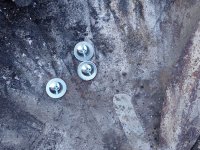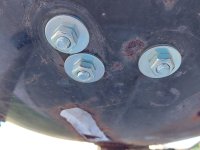Darren Lebner
TVWBB All-Star
They're at most the size of a wall nail or screw.
Any way to fix this? Or just keep using it until the bottom falls out - literally?
Also, any way to prevent or delay them in the first place?
Thanks, everyone.
Any way to fix this? Or just keep using it until the bottom falls out - literally?
Also, any way to prevent or delay them in the first place?
Thanks, everyone.


